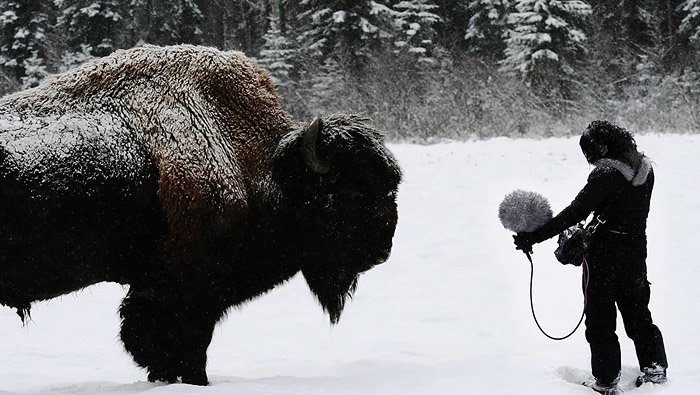
I’m going to rethread over this older thread with specifics about how I approached the initial sound design and FX organizational workflow for #Encanto. We had four sound effects editors, plus me and one assistant. Just me designing sounds. 🧵 1/?
https://twitter.com/EssaHansen/status/1404529907594534912
First watch, I gathered character names, relationships, gifts, and listed out design elements like candle and door magic, casita stress/cracks, animals, ambience ideas, where and how often things repeated (e.g. casita formation in opening and ending). 2/?
https://twitter.com/EssaHansen/status/1404530042814668803?s=20&t=pLjxbsBGLlzhCscuCuE1hg
I also note my feelings about the themes, character arc, narrative shape, setting, and focal points of the story, because story needs to be my core focus from the start. This will inform the aesthetic direction and also where I spend my and my team’s energy most efficiently. 3/?
An example of categories & sub-categories…
CASITA : Wood, Metal, Tile, Creaks, Cracks
GIFTS : Strength, Plants, Weather, Vision, Shapeshift, Healing
CANDLE : Magic, Flame
4/?
CASITA : Wood, Metal, Tile, Creaks, Cracks
GIFTS : Strength, Plants, Weather, Vision, Shapeshift, Healing
CANDLE : Magic, Flame
4/?
https://twitter.com/EssaHansen/status/1404530137224278017?s=20&t=pLjxbsBGLlzhCscuCuE1hg
Often my initial idea of what’s needed will break into multiple categories during design. e.g. Should sand and magic be separate categories for Bruno’s gift? Have to strike a balance between detail and ease of use. 5/?
Predub (premix) layout looks something like this. It’s never set in stone, but helps things stay consistent reel-to-reel, which saves the re-recording mixer time. What I have to look at is that across 6-7 reels, elements will not overlap on the same predub. 6/? 

{{What I call a predub/premix is a discrete grouping of tracks that will get mixed internally and then printed as a single 7.1 (or other) track…or left mixed but unprinted and controlled by VCAs if it’s an “in-the-box” mix.}}
Even though we have lots of wood, metal, tile materials in the library, performance & tonality was important for the musical quality of la casita’s voice, so I put new ideas on the list. Also fresh candle flame recordings, magic textures, plants… 7/?
https://twitter.com/EssaHansen/status/1404530220896423938?s=20&t=pLjxbsBGLlzhCscuCuE1hg
I love recording animals but we ended up gathering enough library material, and I’ve recorded a lot of big cats in the past.
Here’s a different thread with some some pics:
8/?
Here’s a different thread with some some pics:
8/?
https://twitter.com/EssaHansen/status/1479153443864416259?s=20&t=Y3nKzR_agQC8i9z4g1Qquw
This time I tested making a “available in Show Library” list of what material I had created, what it was for, & any notes about it. A big library can be overwhelming, esp when an editor only needs a portion for their reels, so I hoped this document would help answer questions.9/?
The film is divided into 10-15 min reels. Encanto's first & final reels are magic-heavy + casita reprises, so I took those. The difficult FX reels like Luisa's song + Bruno tower, & Isabela song + casita breaking went to the most experienced editors. 10/?
https://twitter.com/EssaHansen/status/1404530478695129095?s=20&t=pLjxbsBGLlzhCscuCuE1hg
I took over magic in the reel with Antonio’s gift, so that editor could focus on animals and casita’s first cracks (hard).
I also covered vision magic in Bruno’s reel so that newer but talented editor could focus on all the other really fun stuff. 11/?
I also covered vision magic in Bruno’s reel so that newer but talented editor could focus on all the other really fun stuff. 11/?
https://twitter.com/EssaHansen/status/1404530611000266755?s=20&t=pLjxbsBGLlzhCscuCuE1hg
I spent about one week recording & worktaping new material for the library. Then into design/edit/supervising mode when it’s harder to pop out and record things. Our assistants continue to record throughout, responding to FX and foley team needs. 12/?
https://twitter.com/EssaHansen/status/1404531132448665602?s=20&t=pLjxbsBGLlzhCscuCuE1hg
Not all film sound designers play a supervising role. I enjoy it and feel like my job is to make the whole track as cohesive and high quality as I can, so I try to set us all up for success. 13/13
I hope this was helpful or interesting! Drop questions here if you have them.🕯️✨
I hope this was helpful or interesting! Drop questions here if you have them.🕯️✨
We can learn so much from each other—even in different departments, or film vs game audio—I try to share workflow and creative process whenever possible. Search my handle and #sounddesign for older threads. 💙
imdb.com/name/nm3614489/
imdb.com/name/nm3614489/
• • •
Missing some Tweet in this thread? You can try to
force a refresh




